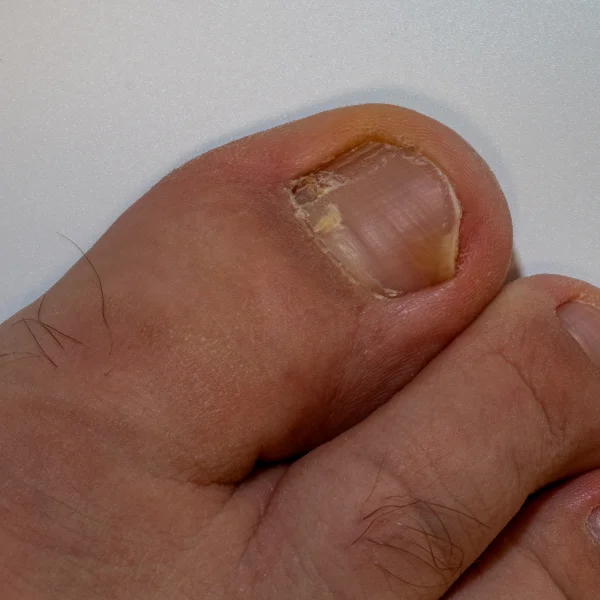The expertise of the podiatrists at Clinique Podiatrique Duvernay, located in the heart of East Laval, allows us to precisely address this common podiatric condition that affects many patients. With our extensive experience in treating ingrown toenail problems, we aim to provide you with complete and reliable information.
Understanding the Ingrown Toenail and Its Impacts
The ingrown toenail represents a common podiatric condition that can significantly affect your quality of life. This condition occurs when the edge of the ingrown toenail penetrates the surrounding skin, causing pain and discomfort.
Anatomy of the Affected Nail
Complications arise when the nail grows abnormally into the surrounding soft tissue, creating a zone of pressure and inflammation.
Main Causes and Risk Factors

Several factors can contribute to the development of an infected ingrown toenail:
- Tight shoes
- Incorrect nail cutting
- Repeated trauma
- Genetic predisposition
- Intense sports activities
Recognizing Early Symptoms
An ingrown toenail treatment becomes necessary when you observe the following signs:
- Redness and swelling: The area around the nail becomes red, swollen, and warm to touch. This inflammation is often the first visible sign of an ingrown toenail.
- Pain under pressure: Increased sensitivity occurs when wearing shoes or even from sheet pressure during the night. This pain can vary from mild discomfort to sharp, throbbing pain.
- Sensation of warmth: The affected area becomes warmer than the rest of the foot, indicating an active inflammatory reaction. This localized heat is often accompanied by increased sensitivity.
- Possible discharge: In more advanced cases, yellowish or greenish discharge may appear, signaling a possible nail infection requiring immediate medical attention.
- Difficulty walking: Pain can become intense enough to alter your natural gait, creating a limp or reluctance to put weight on the foot.
Early recognition of these symptoms is crucial to prevent the ingrown toenail from worsening and avoid potential complications.
Symptom Progression
Initial signs may seem mild, but without proper treatment, the condition can quickly worsen and lead to serious complications.
Modern Therapeutic Solutions

The treatment of the ingrown toenail varies according to severity.
Conservative Approaches
- Antiseptic foot baths
- Appropriate bandaging
- Footwear modification
- Specific cutting techniques
Possible Infection Complications
Nail infection can develop rapidly if left untreated. Infection progression can lead to serious complications such as cellulitis or osteomyelitis. Intense pain may appear, accompanied by fever and significant swelling.
Recommended Home Care
Daily management of an ingrown toenail requires specific care and particular attention to hygiene. It is recommended to keep your feet clean and dry, use appropriate antiseptic solutions, and wear comfortable shoes. Regular preventive care can avoid many complications.
Impact on Daily Life
An ingrown toenail can significantly affect your daily, professional, and sports activities. This condition can limit your mobility, impact your work performance, and prevent you from fully enjoying your sports activities. Constant discomfort can also affect your sleep and mood.
When to Consult a Specialist
It is essential to recognize signs that require immediate professional consultation. Signs of persistent infection, intense pain, or redness extending beyond the toe are indicators that it’s time to consult a qualified podiatrist to treat your ingrown toenail.
Conclusion and Next Steps
The ingrown toenail requires special attention and appropriate care. At Clinique Podiatrique Duvernay, our expert podiatrists are here to support you. For an accurate diagnosis and effective treatment of your ingrown toenail, make an appointment at our clinic located in East Laval. Contact us at (450) 936-3772 to regain the walking comfort you deserve.

